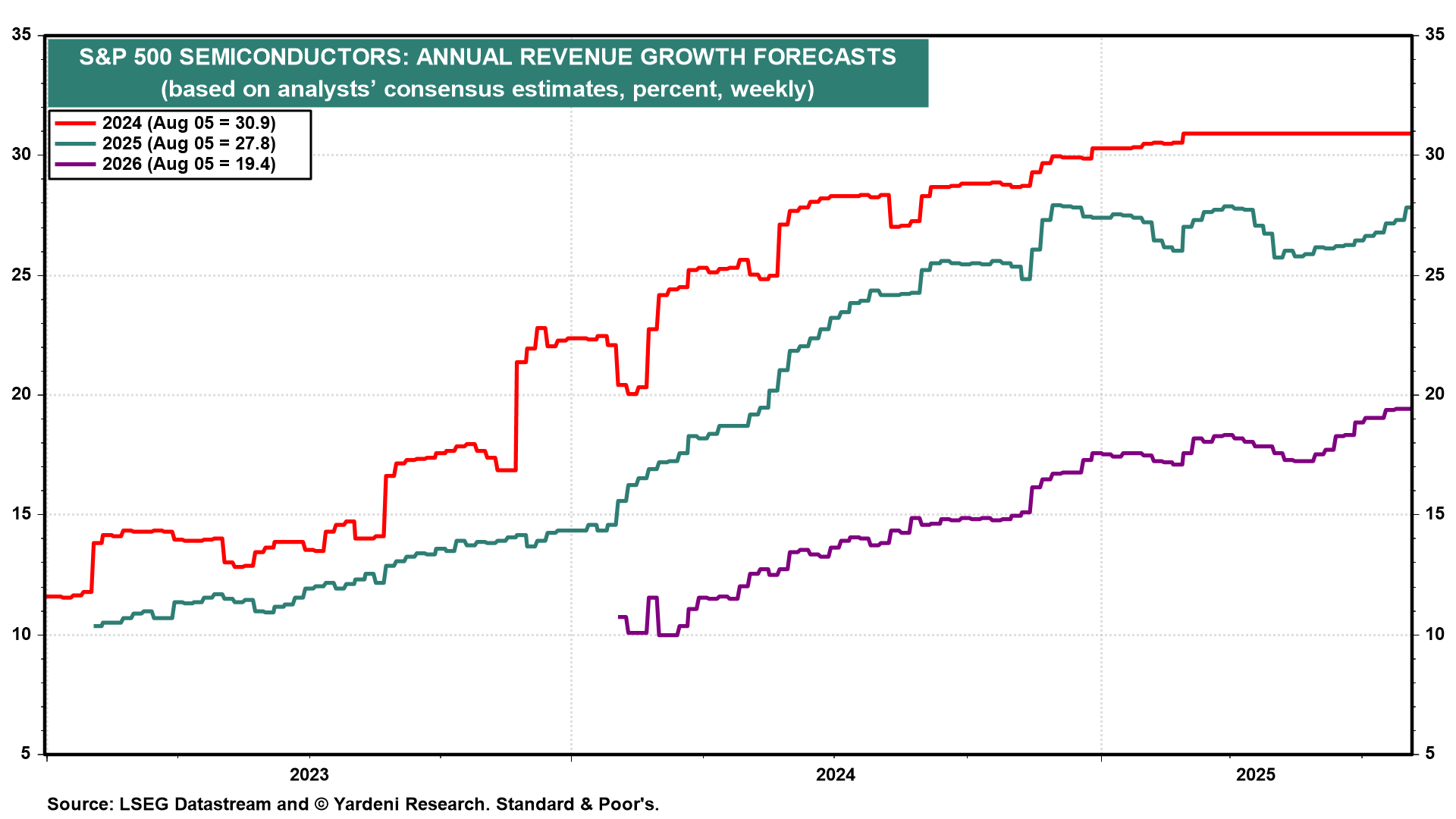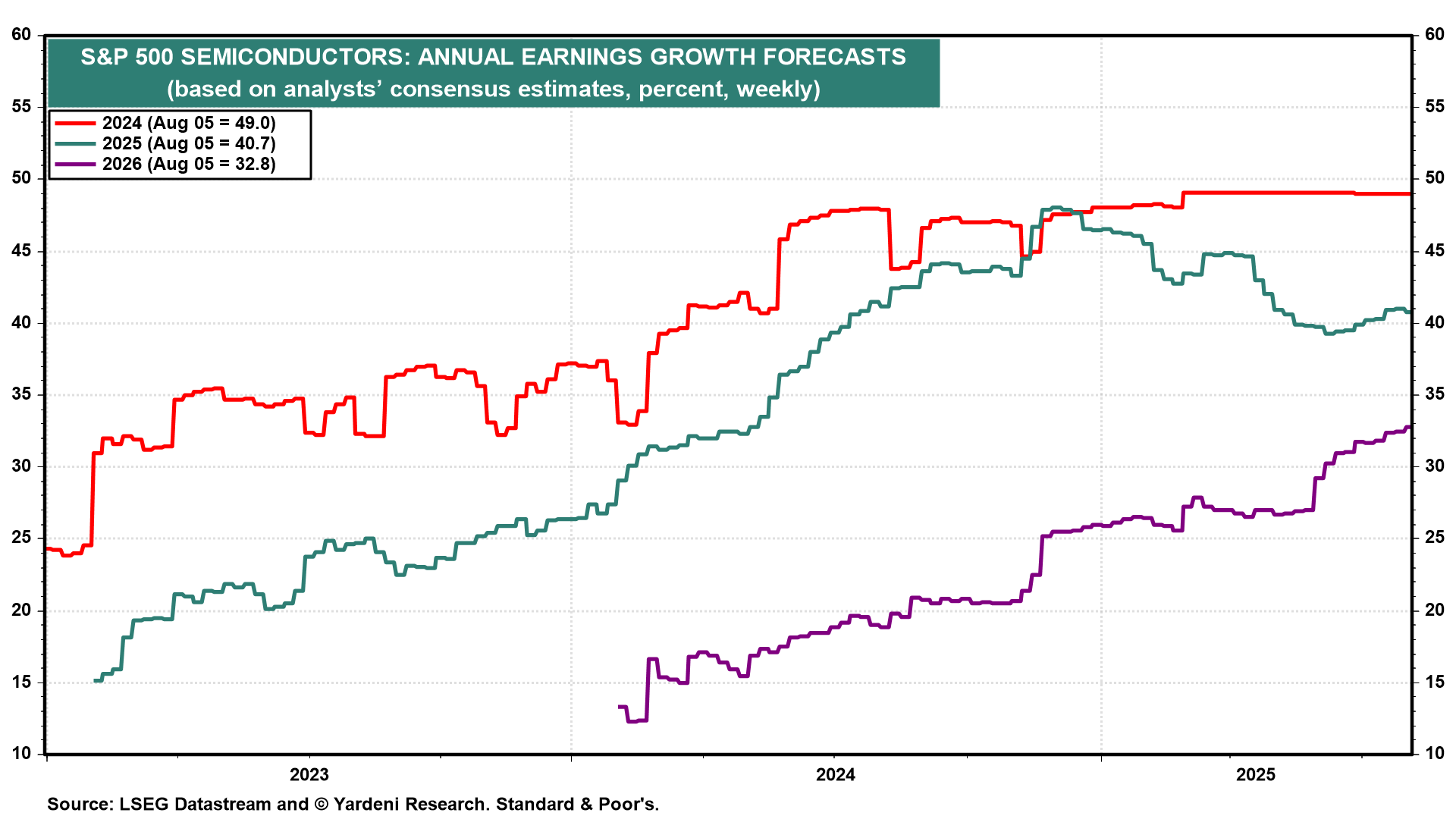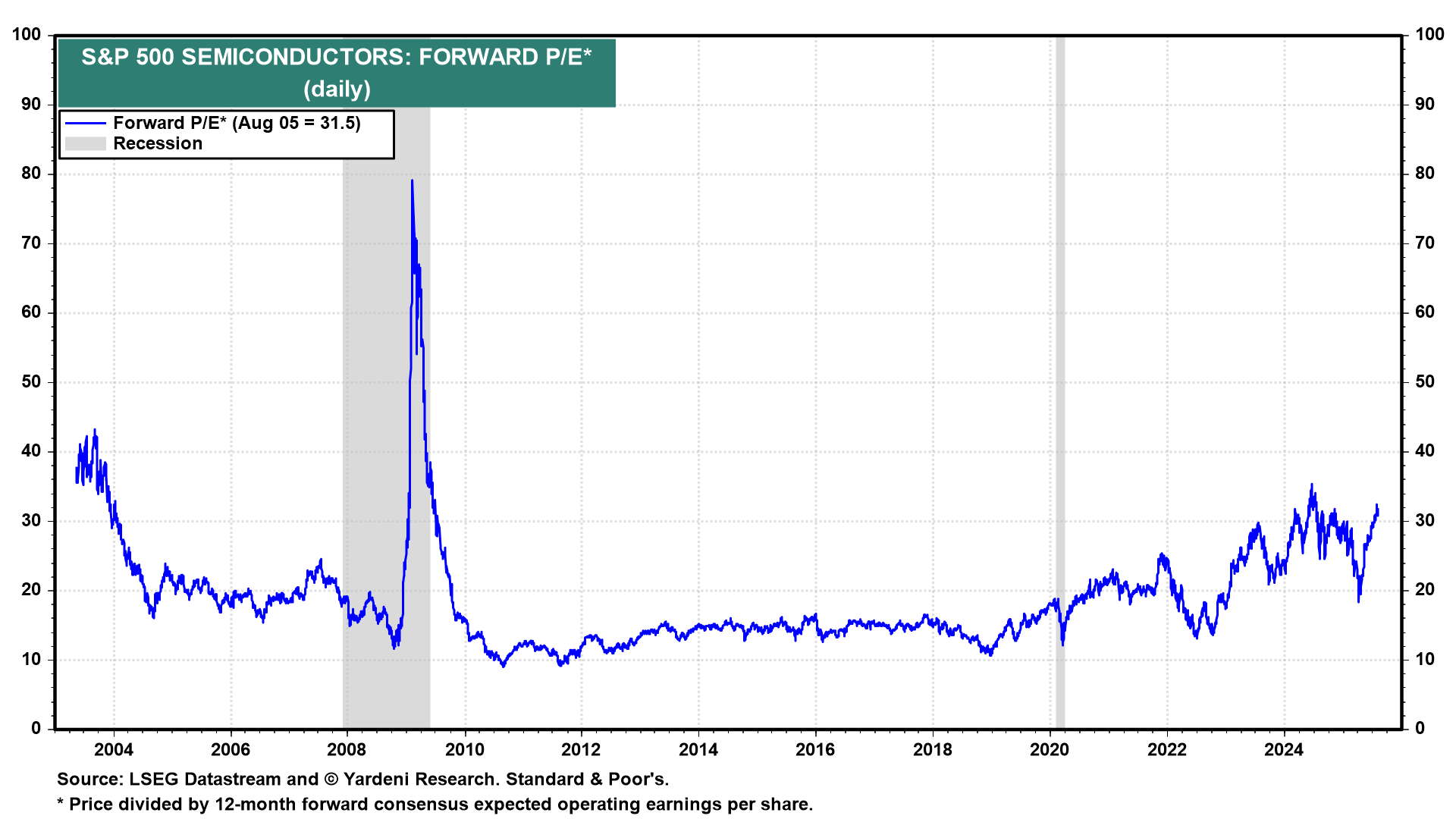Oklo stock tumbles as Financial Times scrutinizes valuation
Semiconductors initially were exempt from the tariffs President Donald Trump announced on imports from Taiwan and elsewhere, but their rarified status may be about to end. President Trump said on Tuesday that semiconductor-specific tariffs would be announced in the next week or so.
Then, last night after the financial markets closed, the President floated the idea of placing 100% tariffs on semiconductors, with exemptions for companies that are manufacturing in the US or have announced intentions to do so. Specifics weren’t forthcoming, and dealmaking will undoubtedly bring that tariff percentage down.
Nonetheless, 100% tariffs is certainly a higher starting point than we’ve seen on other tariffs imposed on countries’ imports so far. The semiconductor industry initially received a reprieve from tariffs on April 11 under a Presidential Memorandum that excluded certain semiconductor products from reciprocal tariffs.
But the industry knew the exemption would likely end because the Department of Commerce initiated on April 1 an investigation into the national security impact of imports of semiconductors and related products under Section 232 of the Trade and Expansion Act of 1962, a primer by Torres Trade Law explains. (Separate investigations under the same section are being conducted into critical minerals and pharmaceuticals and pharmaceutical ingredients.)
A recommendation from that investigation is required by December 27; but given the President’s recent comments in Tuesday’s CNBC interview, the report may already be done.
Tariffing semiconductors is tricky because the US imports relatively few semiconductors per se, roughly $45 billion worth. But it does import many products that include semiconductors (like smartphones). Sanford Berstein’s Stacy Rasgon speculated in a separate CNBC interview that tariffs could be placed on semiconductors contained in imported devices.
Advanced Micro Devices (NASDAQ:AMD), Apple (NASDAQ:AAPL), Nvidia (NASDAQ:NVDA) and other semiconductor makers have their chips manufactured for them by Taiwan Semiconductor Manufacturing (NYSE:TSM) in Taiwan. President Trump didn’t reveal how high the semiconductor tariffs will be or whether they’ll be in addition to the existing 20% tariffs on Taiwan’s imports. His goal: to push chip manufacturing back to US shores.
The movement to reshore semiconductor manufacturing is well underway. The impetus began during President Trump’s first term, when TSMC announced plans to build its first fab in Arizona. The company expanded those plans under President Biden to a second fab announced in 2022 and a third announced in 2024, then doubled down in March under Trump 2.0—adding to its plans another three fabs, two advanced packaging plants, and an R&D team center.
TSMC’s investment in the US is now expected to total $165 billion, though its most cutting-edge chips are still expected to be produced in Taiwan. Ironically, many of the chips TMSC produces in the US may need to be exported to Asia, where they can be placed in electronic products.
So far, semiconductor investors seem to have shrugged off the impact of tariffs during Trump’s Tariff Turmoil.
The S&P 500 Semiconductor stock price index has risen 28.8% ytd through Monday’s close (before Trump’s Tuesday CNBC interview), pushed higher by its three largest components, Nvidia (which represents 57.9% of the industry’s market capitalization), Broadcom (NASDAQ:AVGO) (17.1%), and Advanced Micro Devices (AMD) (3.5%) (Fig. 1 below and Fig. 2). AMD’s shares have risen 46.4% ytd through Monday’s close, followed by Nvidia’s 34.0% gain and Broadcom’s 28.4% pop.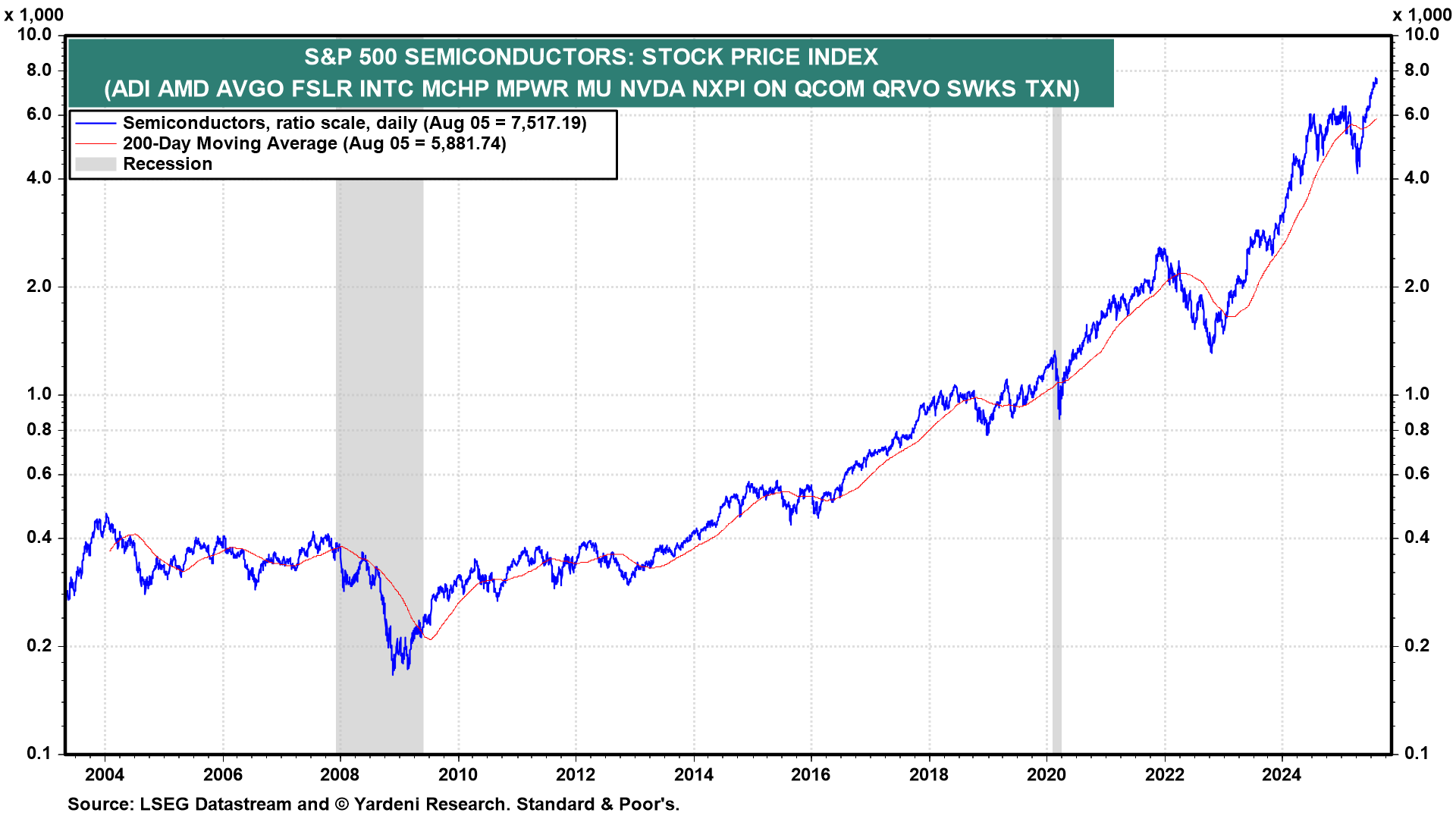
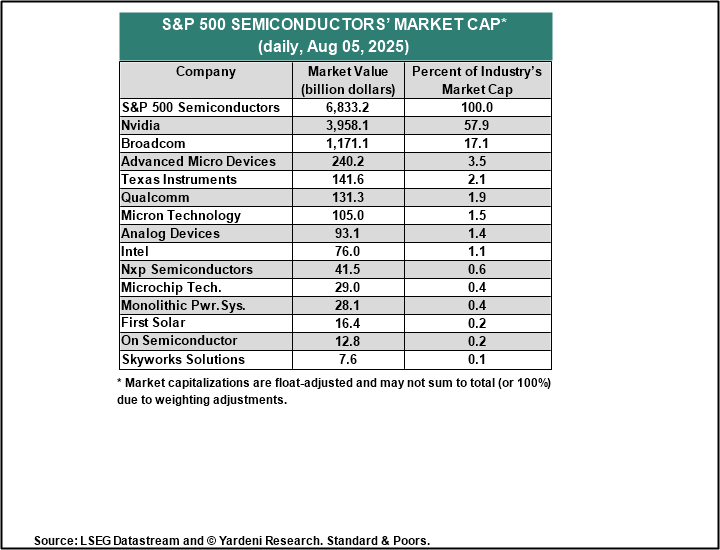
Tuesday’s news of coming tariffs on semiconductors did elicit a slight response: The S&P 500 Semiconductor stock price index dipped 0.95% that day, albeit on a weak day in the stock market when the S&P 500 fell 0.49%. The lack of panic may reflect the tariff threat’s lack of details: Perhaps the new tariffs will roll out over a span of years, giving the industry time to move production into the US?
Trump’s tariff announcement was just the latest in a busy news week for the semiconductor industry. Data from AMD and the Semiconductor Industry Association (SIA) indicate that semiconductor sales remain robust:
(1) AMD fails to impress. AMD reported Q2 revenue of $7.7 billion, up 31.7% y/y and slightly higher than the $7.4 billion analysts expected. Its Q2 adjusted EPS of $0.48 hit analysts’ consensus estimate but was far below the year-earlier $0.69, primarily due to an $800 million inventory write-down related to the Trump administration’s ban on AI chip sales to China.
For Q3, AMD expects revenue of $8.4 billion to $9.0 billion; the midpoint of $8.7 billion represents 28% y/y growth and is above analysts’ revenue forecast of $8.3 billion. The company’s forecast doesn’t include the resumption of AI chip sales to China, which most analysts believe will happen given Trump’s reversal on the ban last month. The company also should benefit from the June launch of its MI350 chips, which are expected to compete with Nvidia’s Blackwell chips.
Nonetheless, AMD shares fell 6.3% in Tuesday’s aftermarket trading. The tumble may have more to do with the stock’s 44.3% ytd gain through Tuesday’s close than company fundamentals.
CEO Lisa Su struck an optimistic note during the company’s earnings conference call: “Looking ahead, we see a clear path to scaling our AI business to tens of billions of dollars in annual revenue. … We are in the early stages of an industry-wide AI transformation that will drive a step-function increase in compute demand across all of our markets, positioning us for significant revenue and earnings growth over the coming years.”
(2) Global demand solid, too. Global semiconductor sales in Q2 rose 7.8% q/q and nearly 20% y/y, lifting sales to a new record, according to a SIA’s August 4 press release (Fig. 3 below). On a q/q basis, sales were strongest in Asia Pacific/All Other (18.2%) followed by China (12.2), Europe (3.9), Americas (-0.6), and Japan (-2.7) (Fig. 4).
June’s US industrial production release confirmed the industry’s strength, with the production of semiconductors and related components rising 15.3% y/y to a new record (Fig. 5 below).
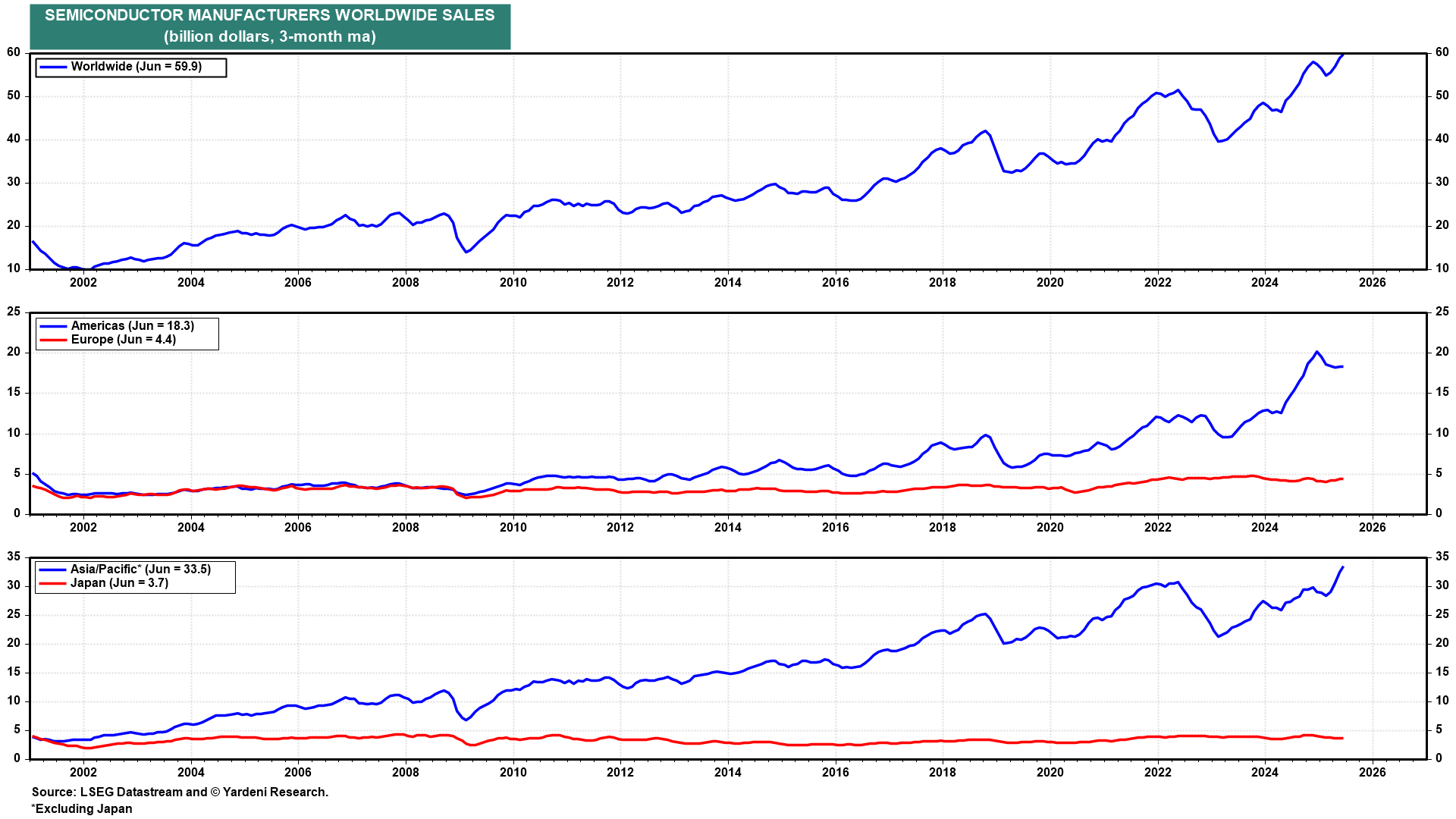
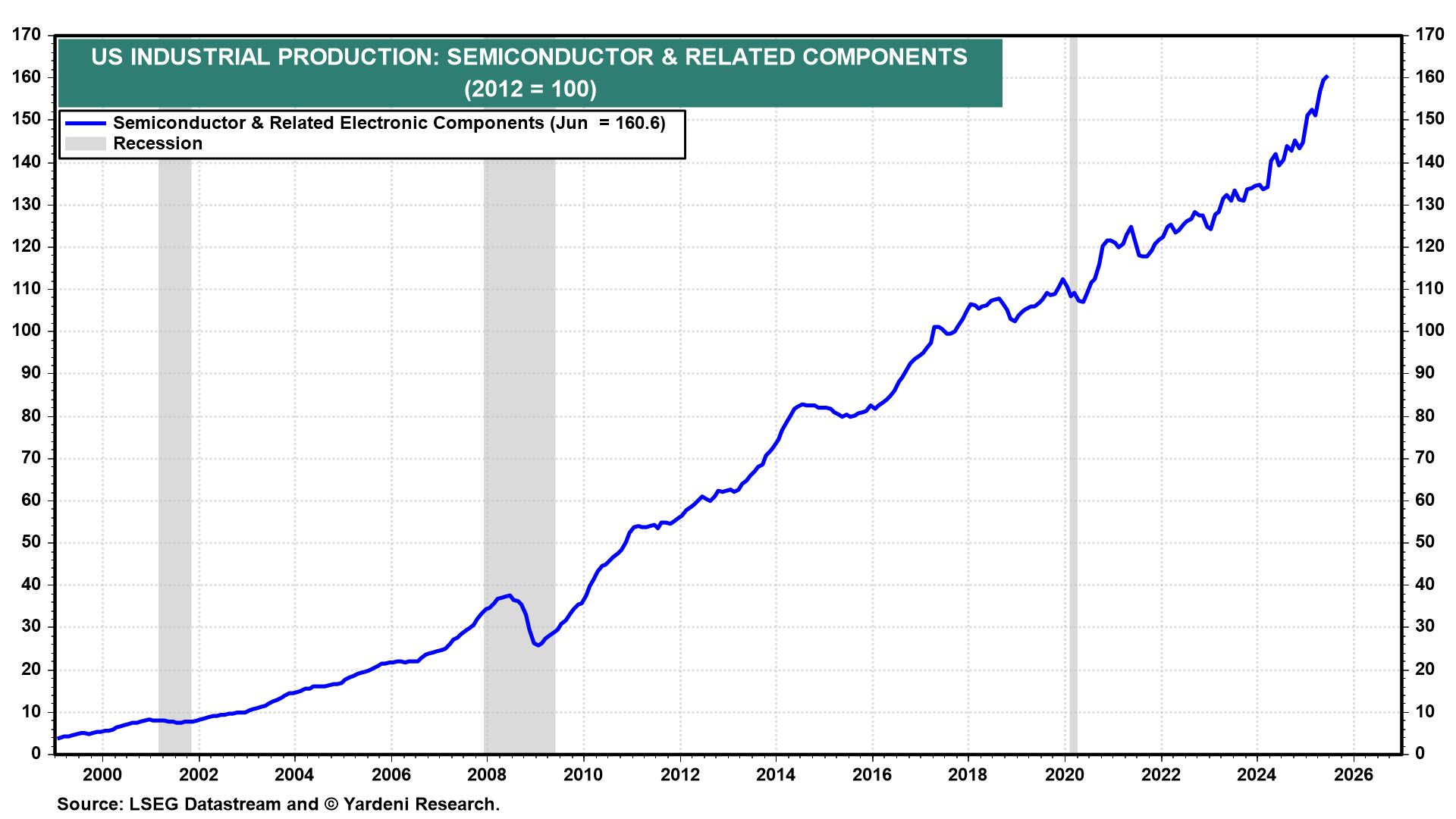
Wall Street’s analysts remain optimistic that the industry’s revenue and earnings growth will remain robust. The S&P 500 Semiconductors industry’s forward revenue per share, forward earnings per share, and forward profit margin each are near or at record-high levels (Fig. 6 below, Fig. 7, and Fig. 8).
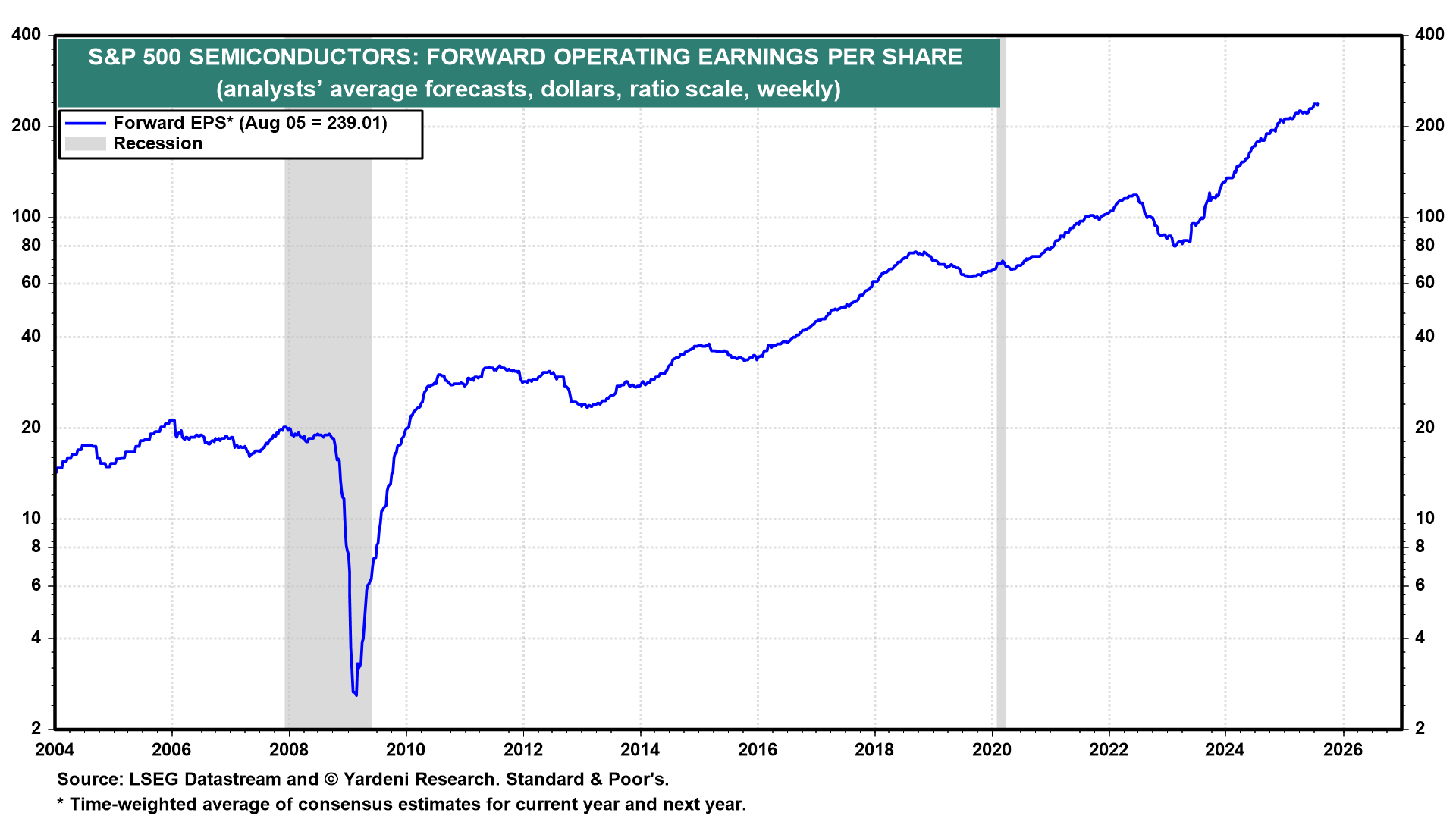
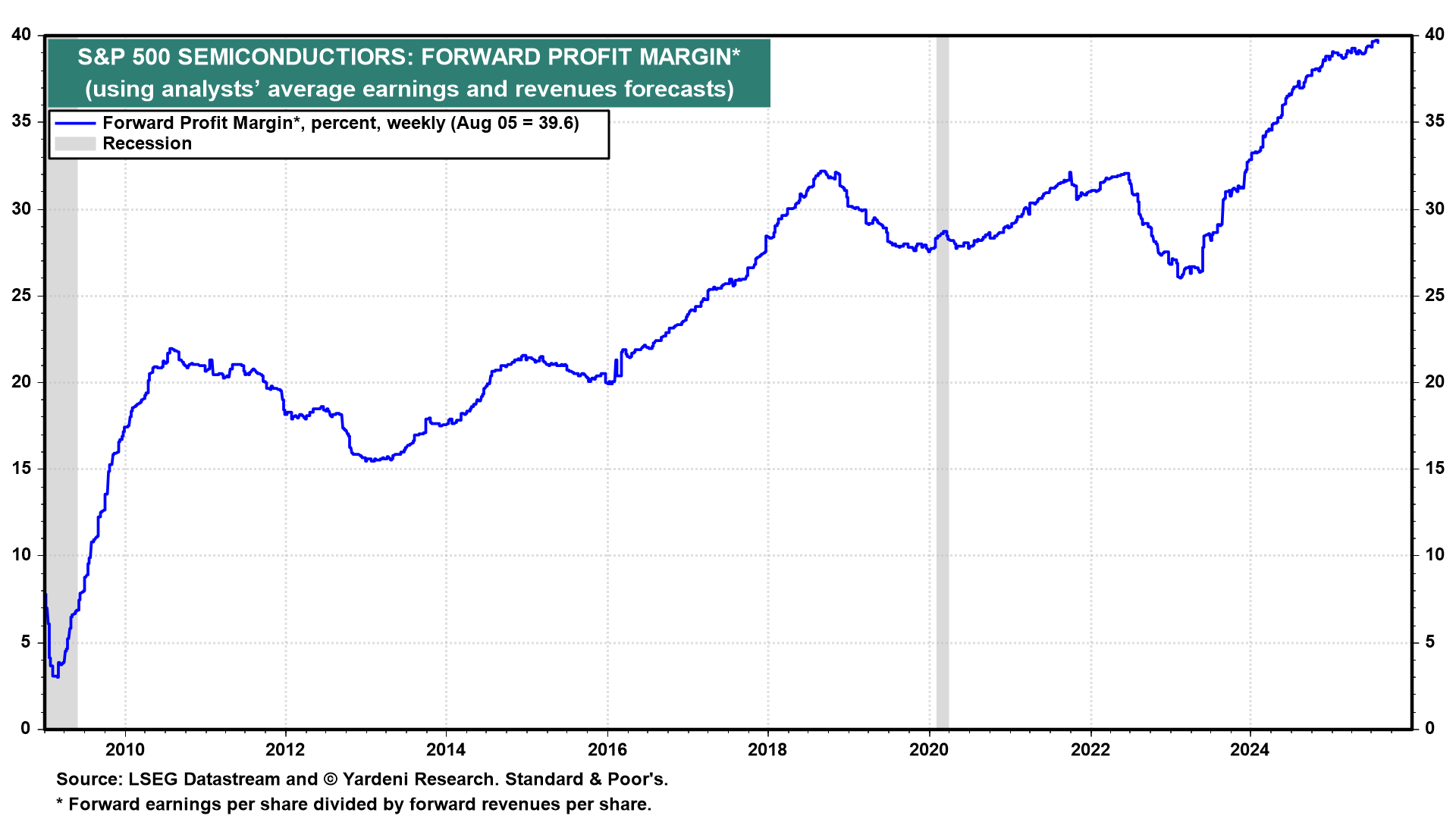
Analysts expect the industry to grow revenue by 27.8% this year and 19.4% in 2026 and earnings by an astounding 40.7% this year and 32.8% in 2026 (Fig. 9 and Fig. 10 below). The only cloud on the industry’s horizon is valuation. Its 31.5 forward P/E is near recent high levels (Fig. 11).